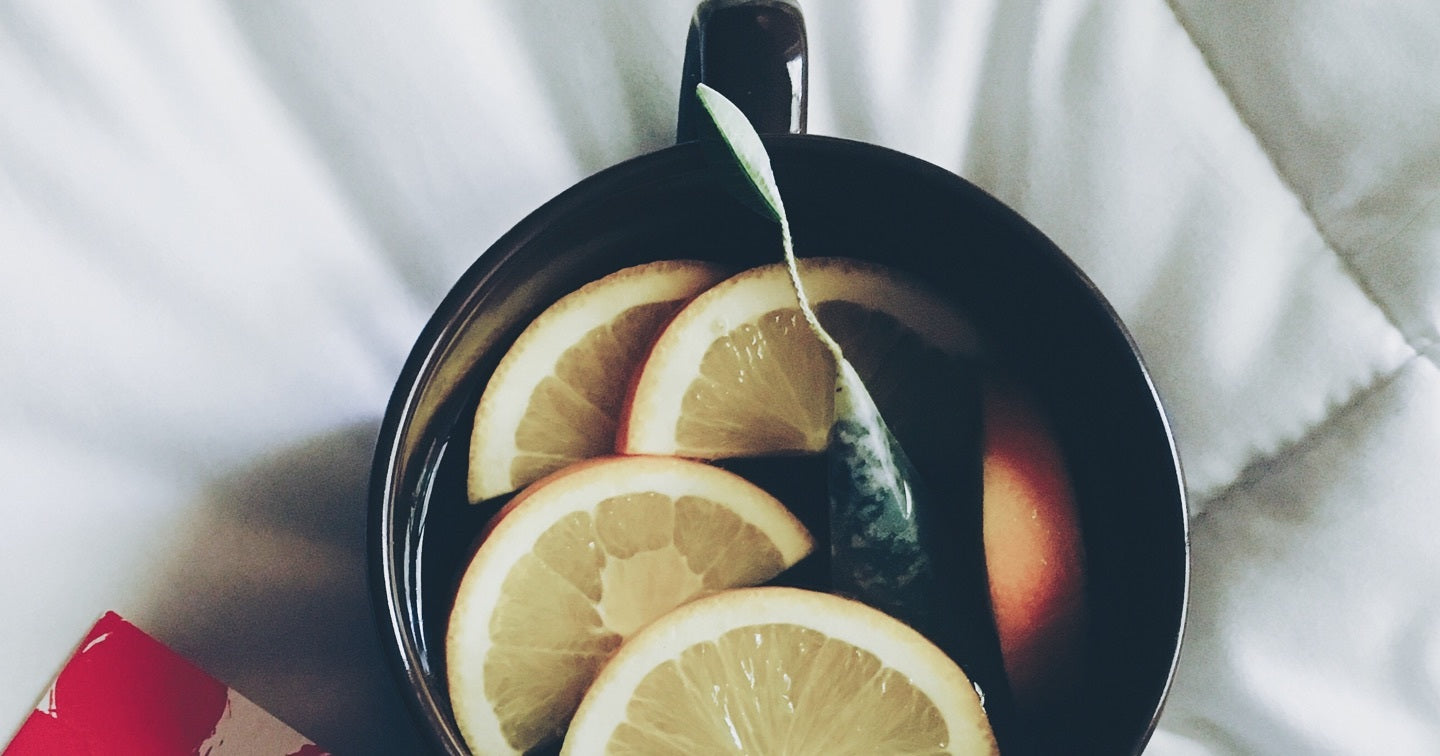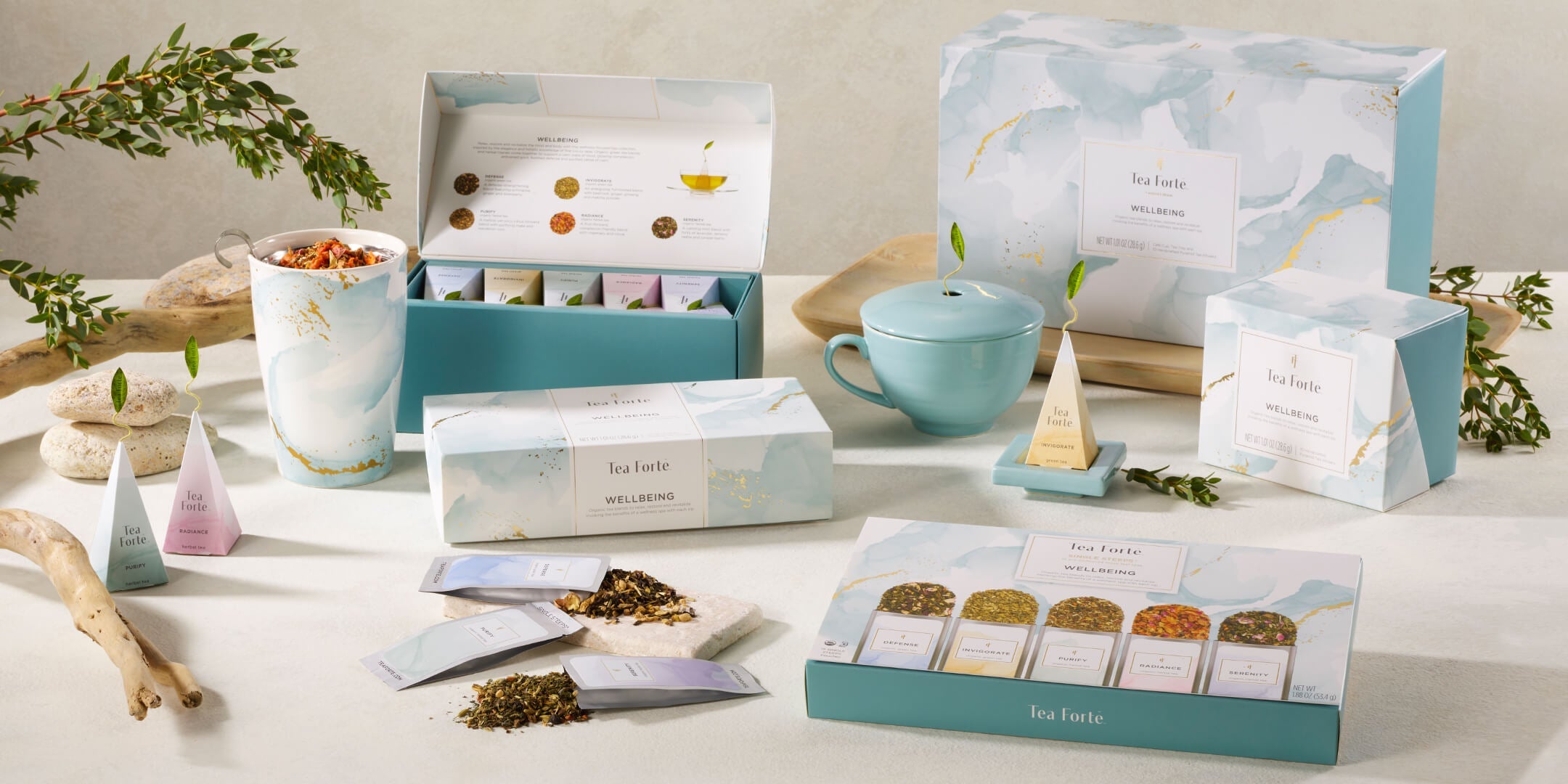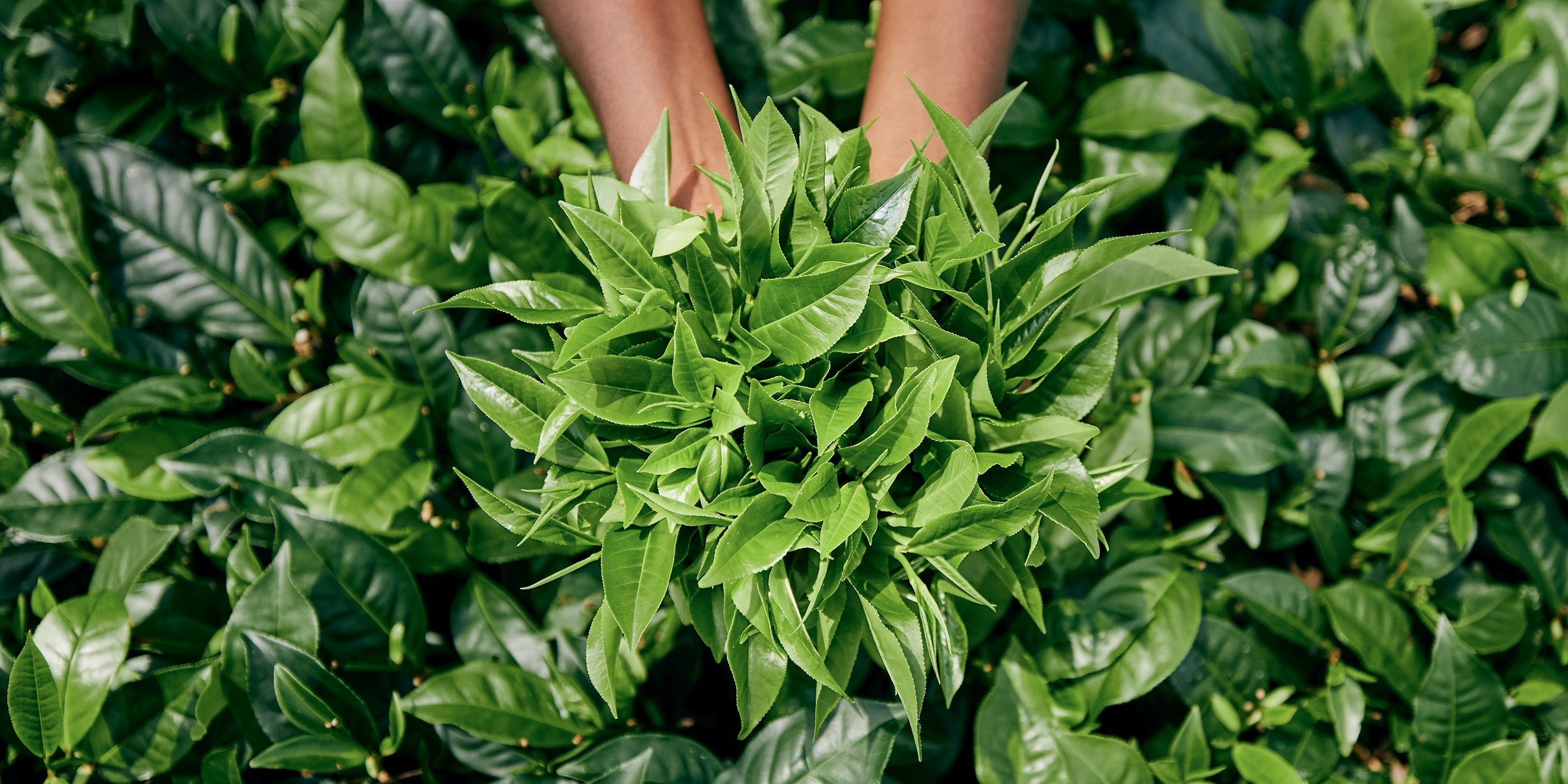When we talk about tea, we’re not referring to just one thing. In fact, tea can be categorized into five main varieties: black, green, white, oolong, and herbal tisane. With the exception of herbal tisanes, all tea comes from the leaves of the camellia sinensis plant, and the variety of tea we drink depends on how the leaves were processed. So, how much caffeine is in tea? Read on to learn the subtle differences across the broad array available for your enjoyment.

Herbal teas are a blend of flowers, fruit, herbs, and spices and contain no tea leaves – or caffeine.
CAFFEINE LEVELS BY TEA TYPE
Black tea is made from mature leaves, which are fermented or oxidized, dried and rolled after harvesting. Green tea is made from younger leaves, which are scalded, oxidized without fermentation, dried and rolled. White tea, made from young leaves as well, undergoes the same process as green tea, with one exception: a delicate steaming takes the place of scalding. These distinctions require slightly different water temperatures and steeping times to bring out the true flavor in each cup, and as a result, different varieties of tea contain different levels of caffeine once they’ve been brewed.
The hotter the water used to make a cup of tea and the longer it takes to steep, the higher its caffeine content with generally be. So, black tea, which steeps the longest at the highest temperature, generally contains more caffeine than its counterparts. In descending order, oolong, green, and white tea have slightly less caffeine than hotter, more deeply-steeped leaves. Herbal tisanes contain no caffeine, and for that reason are often labeled “caffeine-free.” So, for those wondering, “Does herbal tea contain caffeine?” the answer is, “Generally speaking, no.”
Some herbal teas MAY contain an ingredient that naturally contains caffeine, such as cacao shells or yerba mate. Only a handful of Tea Forté's herbal tisanes contain these ingredients, and even so, the caffeine content per serving for these teas is extremely low. To learn the caffeine amount of your favorite blend, there are 2 places you can check: the side of the Loose Tea Canister you've purchased, or, visit the blend page of your favorite tea on our website. All our tea blend pages and Loose Tea Canisters list the amount of caffeine per serving.

A cup of comfort on a cool day.
CAFFEINE CONTENT ACROSS TEAS
Specifically, black and oolong tea may contain around 50mg of caffeine – about half the caffeine content of a cup of brewed coffee. Green tea usually contains 30 to 50mg, and white tea around 20mg. For the tea drinker who prefers a true energy boost, matcha is a wonderful choice: made from whole green tea leaves ground into a nutrient-packed powder, it can offer as many as 70mg of caffeine per 8-ounce serving. Experts agree that consuming a maximum of 400mg of caffeine per day is acceptable for most people, so an avid tea drinker may enjoy multiple cups of the comforting drink each day without fear of overdoing it.
Another perk of green tea and matcha is the fact that it contains a high level of L-theanine, a healthy amino acid known to temporarily increase the brain’s dopamine levels and take the edge off of caffeine. That’s why a cup of brewed green tea or matcha-based drink delivers a gentle energy boost without the jitters that may accompany coffee consumption.

Steeping loose leaf black tea by the cup.
CAFFEINE-FREE VS. DECAF TEA
A slight variance exists between the terms caffeine-free and decaf; contrary to popular opinion, they mean different things. For a beverage to be caffeine-free, it must contain no caffeine. For a beverage to be decaffeinated, its caffeine content must have been reduced to a minimum.
So, herbal tisanes are considered caffeine-free since the leaves, roots, fruits and spices used to make them are already free of caffeine. All other forms of decaf tea (black, green, white, and oolong) may be decaffeinated through a production process using water, carbon dioxide or organic solvents. Trace amounts of caffeine may remain, but not enough to affect most who drink it.

Sunrise on a tea garden in Indonesia.
To enjoy Tea Forté’s fine selection of teas, begin by exploring our broad selection of varieties, including our decaffeinated and caffeine-free herbal blends.
EXPLORE A RANGE OF TEA TYPES
You may also enjoy

Tea Varieties
What's the Difference Between Herbal and Decaf Tea?

Health Benefits
The Health Benefits of Drinking Tea Without Caffeine

Discovering New Blends
Introducing the Wellbeing Collection
Tea Forté's Wellbeing Collection offers five wellness tea blends curated specifically to relax, restore and revitalize, bringing the benefits of a wellness spa into each calming cup.

